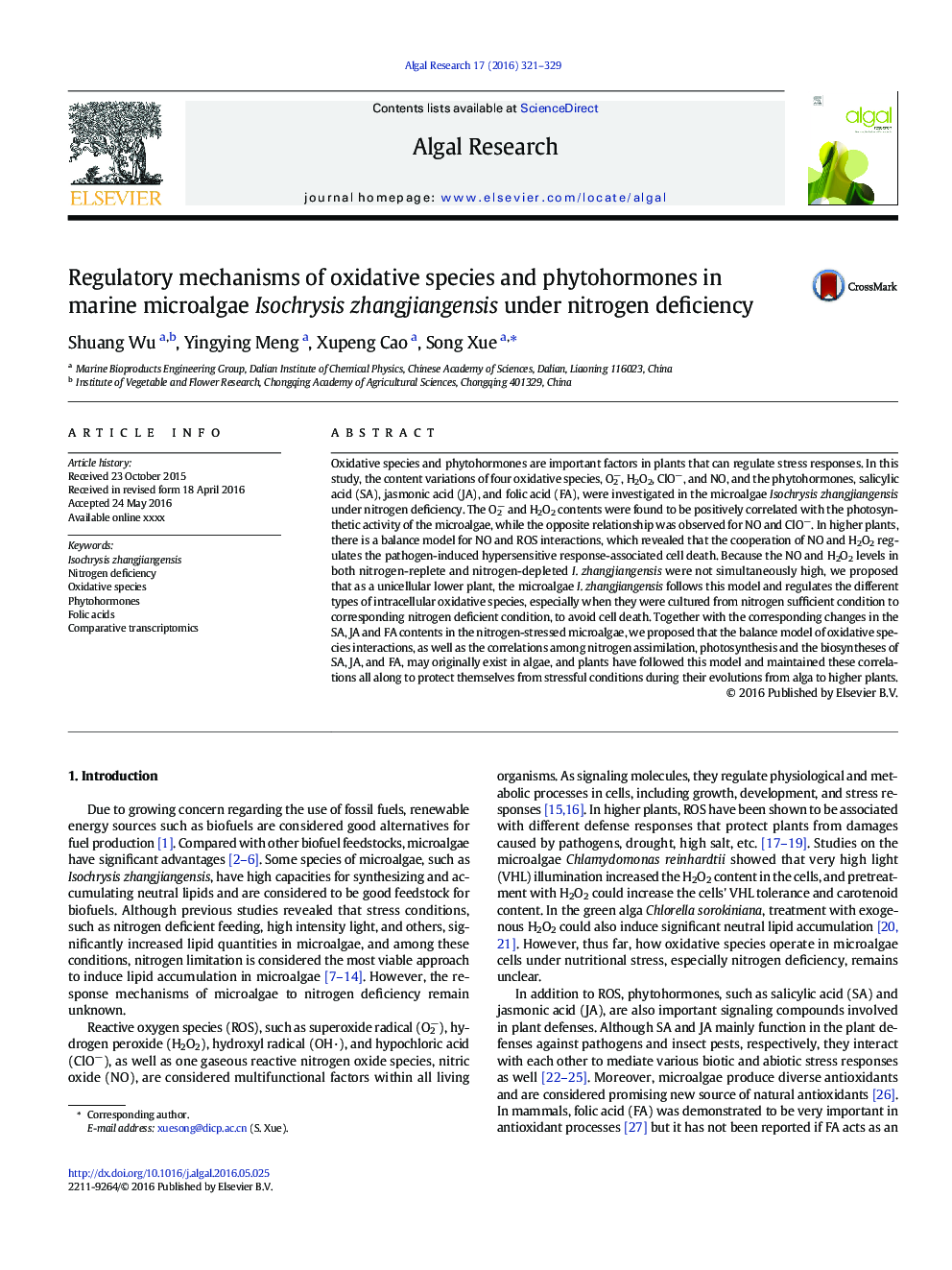| Article ID | Journal | Published Year | Pages | File Type |
|---|---|---|---|---|
| 8086937 | Algal Research | 2016 | 9 Pages |
Abstract
Oxidative species and phytohormones are important factors in plants that can regulate stress responses. In this study, the content variations of four oxidative species, O2â, H2O2, ClOâ, and NO, and the phytohormones, salicylic acid (SA), jasmonic acid (JA), and folic acid (FA), were investigated in the microalgae Isochrysis zhangjiangensis under nitrogen deficiency. The O2â and H2O2 contents were found to be positively correlated with the photosynthetic activity of the microalgae, while the opposite relationship was observed for NO and ClOâ. In higher plants, there is a balance model for NO and ROS interactions, which revealed that the cooperation of NO and H2O2 regulates the pathogen-induced hypersensitive response-associated cell death. Because the NO and H2O2 levels in both nitrogen-replete and nitrogen-depleted I. zhangjiangensis were not simultaneously high, we proposed that as a unicellular lower plant, the microalgae I. zhangjiangensis follows this model and regulates the different types of intracellular oxidative species, especially when they were cultured from nitrogen sufficient condition to corresponding nitrogen deficient condition, to avoid cell death. Together with the corresponding changes in the SA, JA and FA contents in the nitrogen-stressed microalgae, we proposed that the balance model of oxidative species interactions, as well as the correlations among nitrogen assimilation, photosynthesis and the biosyntheses of SA, JA, and FA, may originally exist in algae, and plants have followed this model and maintained these correlations all along to protect themselves from stressful conditions during their evolutions from alga to higher plants.
Keywords
Related Topics
Physical Sciences and Engineering
Energy
Renewable Energy, Sustainability and the Environment
Authors
Shuang Wu, Yingying Meng, Xupeng Cao, Song Xue,
